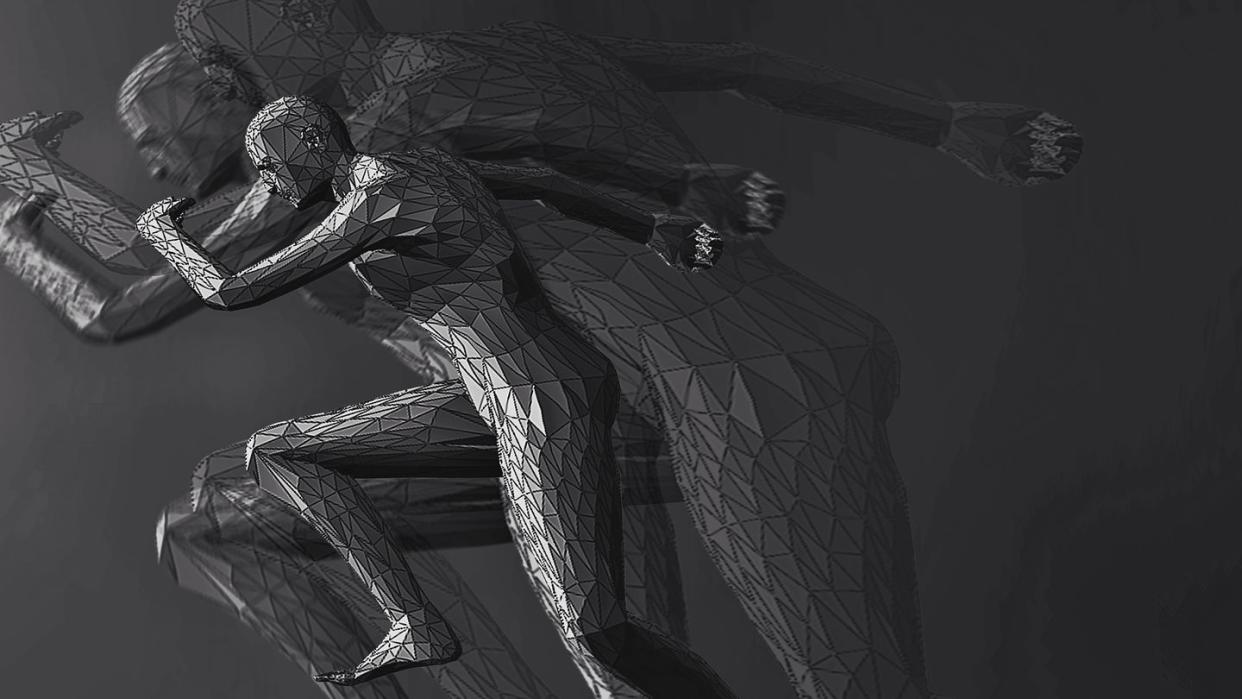A Chinese Humanoid Just Broke the Robot Speed Record—and Now It's a Race Against Time

Recreating the bipedal gait of Homo sapiens is a tough task for robot engineers, but our artificial brethren are gaining ground.
A new robot called H1, created by the Chinese company Unitree, just claimed the humanoid robot speed record of 3.3 meters per second, or roughly 7.4 mph (there are claims it even reached 11 mph).
This is still a bit below the average human running speed, but what was once no contest is quickly becoming a race that’s too close to call.
The human body isn’t really an ideal template for a robot. Out of the entire family of primates, Homo sapiens are the only ones who spend a majority of their time on two feet—a biological outlier that isn’t exactly easy to replicate in artificial form. In the past decade, many companies have created impressive facsimiles: robots that can run, jump, and stumble just like a real boy. But none of them have been able to generate very much speed while doing so. That’s beginning to change.
Earlier this month, the Chinese robotic company Unitree uploaded a sizzle video to Youtube that highlighted the impressive attributes of its H1 humanoid robot. Chief among those impressive attributed is the robot’s startling speed, clocking in at an impressive 3.3 m/s, or roughly 7.4 mph. That beats the previous record holder, Boston Dynamics’ Atlas, which can book it at a steady 5.59 mph. Unitree claims that its artificial creation can even reach speeds of up to 11 mph.
Founded in Hangzhou just outside Shanghai in 2017, Unitree’s mission is to make legged robotics as affordable as smartphones and drones (very, very expensive smartphones and drones, that is). The 90-second video also displays the H1’s jumping ability, as well as its stair-navigating powers. While it doesn’t quite handle these tasks with the same finesse as a human, it successfully tackles them nonetheless.
The H1 weighs roughly 110 pounds and stands about 5 foot 11 inches tall. The Version 3 model, which is the model highlighted in the video, comes equipped with 864Wh battery capacity and a suite of navigational sensors in its “head.” And this is where the H1’s superhuman abilities really shine. A 3D LiDAR and depth camera provides real-time spatial data that essentially gives the H1 a 360 degree view of its environment.
Although the H1 is fast compared to its humanoid competitors, it’s still a far cry from peak human performance. Usain Bolt clocked a running speed of 27.33 mph during a 100-meter race, and even average human sprinting speeds more than double the H1’s speedy gait.
The H1 also has other impressive robot competition. A bipedal robot named Cassie, designed by Oregon State University’s College of Engineering in 2022, completed the 100 meter race in 24.73 seconds—not exactly Usain Bolt levels, but enough to achieve a 9 mph running speed. However, Cassie is really just a pair of legs with a small drive motor, and not a full-fledged humanoid robot like the H1 or Atlas.
So, when it comes to running, humans still maintain the upper hand—but the robots are gaining ground.
You Might Also Like
